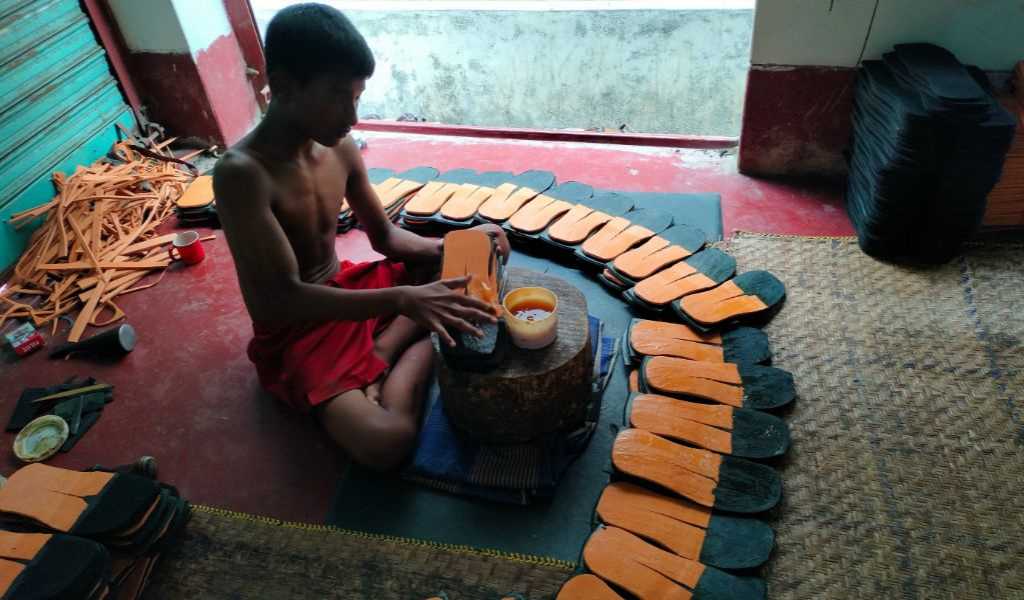Children make up a quarter of workers in Bangladesh’s leather industry, survey finds
Children as young as eight work long shifts every day of the week for £30 a month

Your support helps us to tell the story
From reproductive rights to climate change to Big Tech, The Independent is on the ground when the story is developing. Whether it's investigating the financials of Elon Musk's pro-Trump PAC or producing our latest documentary, 'The A Word', which shines a light on the American women fighting for reproductive rights, we know how important it is to parse out the facts from the messaging.
At such a critical moment in US history, we need reporters on the ground. Your donation allows us to keep sending journalists to speak to both sides of the story.
The Independent is trusted by Americans across the entire political spectrum. And unlike many other quality news outlets, we choose not to lock Americans out of our reporting and analysis with paywalls. We believe quality journalism should be available to everyone, paid for by those who can afford it.
Your support makes all the difference.More than a quarter of the workers in Bangladesh’s small leather workshops are children, according to a new survey, highlighting the grim situation of child labour in the South Asian country.
The survey, done by the University of Sussex’s Institute of Development Studies, found that at least 237 of the 880 leather industry workers in Hazaribagh and Hemayetpur areas of Dhaka and in Bhairab, about 85km from the capital city, were under 18, compelled to work at a young age to support their poor families.
The children, some as young as eight, worked in hazardous conditions, carrying heavy loads, manually dyeing leather with harmful chemicals, and operating cutting tools and heavy machinery with little or no safety gear.
“The children, as young as eight or nine years old, are on as little as £30 a month and working seven days a week in peak season in shifts that just run on and on. A light work day for them is around 10 hours,” said Dr Jody Aked, a technical specialist with the Institute of Development Studies who worked on the report. “A heavy shift is 13 to 14 hours a day, seven days a week for three weeks straight.”
Most of the child labourers surveyed had lost one or both parents and often went to work hungry, Dr Aked said. The older children who could do more work were paid a little more than the younger ones.
“There is definitely a direct link between health emergencies or death in the family and the worst forms of child labour as it plunges the family into financial crisis when they have no savings to dip into. The instant response is to take a child out of school and put them in work,” she told The Independent.
“The sad reality is that many NGOs talk about getting children education, but if you are in a family where there isn’t enough money to eat or pay the rent, it isn’t actually a choice for the children not to work.”
The survey covered nearly 1,700 families living in Dhaka’s slums over five years as part of the institute’s Child Labour Action Research Innovation in South and Southeastern Asia, or CLARISSA, project.
Researchers found that 34.6 per cent of the children were exploited under the worst forms of child labour per the definition of the International Labor Organisation.
This exploitation enabled the leather industry to become Bangladesh’s second largest exporter after garment manufacturing. The country’s leather exports amount to about $2bn (£1.5) a year.
Jiniya Afroze, country coordinator for the CLARISSA project, called for tighter control to address the problem.
“Many informal businesses rely on child labour simply because they lack financial means. By offering flexible business capital, we can help them transition to more responsible practices and reduce their dependence on child workers,” she said.
“At the same time, if employers are forcing children to work longer hours through abuse or coercion, they must be held accountable. This could mean stricter penalties for violations or giving them the training that they need to implement ethical practices.”
Professor Danny Burns, lead author of the report, said Bangladesh’s profitable leather industry was run off the back of some “children living and migrating into rapidly evolving informal settlements”.
Dr Aked said Bangladesh’s interim government, installed last month by protesters who toppled prime minister Sheikh Hasina and forced her into exile, needed to work with informal leather businesses to bring change.
"Understanding their realities and seeing them as an agent of change could be amazing because they really are keen to improve the fiscal conditions of their business so they wouldn’t need to rely on child labour to generate profit,” Dr Aked said.
“The government will need to work on that. Informal businesses have very little say with the government. They are defused, not organised. Officials working a bit more with them would help these children.”
Join our commenting forum
Join thought-provoking conversations, follow other Independent readers and see their replies
Comments